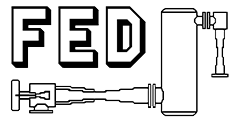
In steel production raw steel is refined during the secondary metallurgy in so-called RH plants (Ruhrstahl-Hereaus-Plants).
The vacuum treatment in RH plants produces steels which will fulfil the highest demands in quality. For this the liquid steel is delivered in to a vacuum chamber where a considerable drop in pressure causes it to disintegrate in to the smallest of parts. This increase in surface area allows the smelt to degas to the best possible extent.
The vacuum plants required for such processes must be reliable and able to suck off very large flow rates under the most difficult of conditions (dusty atmospheres, high temperatures).
The vacuum treatment in RH plants produces steels which will fulfil the highest demands in quality. For this the liquid steel is delivered in to a vacuum chamber where a considerable drop in pressure causes it to disintegrate in to the smallest of parts. This increase in surface area allows the smelt to degas to the best possible extent.
The vacuum plants required for such processes must be reliable and able to suck off very large flow rates under the most difficult of conditions (dusty atmospheres, high temperatures).
Advantages
- Hydrogen and nitrogen contents are reduced (steel is degassed).
- Deoxidation and decarbonisation take place down to the lowest carbon contents in the magnitude of 0,001 mass percent.
- Admixing of alloying contributions during the vacuum treatment.

